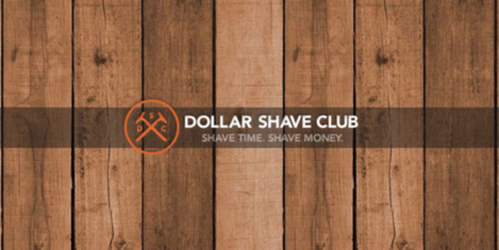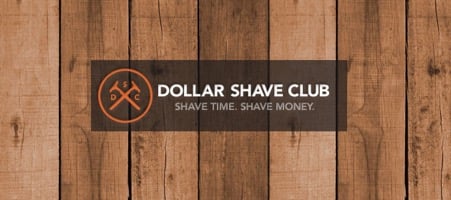


Unilever’s recent acquisition of Dollar Shave Club suggests a significant shift in the consumer products space: manufacturers selling direct to consumers and bypassing traditional retailers.
Profitero’s SVP Strategy and Insights Keith Anderson speaks to Jill Finger Gibson, principal analyst with the Digital Clarity Group and formerly an analyst at IDC.
In this episode, they discuss the growth of the direct-to-consumer model and the key drivers for brands becoming both retailers and manufacturers.
KA: First of all, would you just like to tell us a little bit about yourself and your group, and your particular work that you’ve been up to over these last few months?
JFG: Digital Clarity Group is a research based advisory firm that focuses on the content technology and practices around customer experience management. We work with helping enterprise and mid-market technology buyers select the right technologies, and also increasingly the right service providers, because we believe digital agencies and systems integrators are becoming increasingly important to successful implementations.
My role at the company is principal analyst and I am responsible for covering eCommerce as it relates to customer experience management. Some of the topics that I’ve been looking at recently are things such as cross border eCommerce, direct-to-consumer eCommerce, and content and eCommerce mixed together.
KA: Speaking of direct-to-consumer eCommerce, we’ve recently seen the Unilever-Dollar Shave Club deal. What would you say are the key drivers for the increase of direct-to-consumer sites that brands are developing?

JFG: There’s a couple of things here. We’re seeing a general move towards so-called omni-channel customer engagement across all industries, so not just selling through one channel like a physical store or even just a physical store plus some online, but also selling and reaching customers wherever they are, with things like kiosks and mobile shopping.
Basically this means that traditional retailers who carry different brands and products, the big-box retailers like Walmart and Target where you go for your groceries or your everyday items, are not seeing massive sales growth anymore.
Another issue within the US is that a lot of the retail space for physical retail and big box stores are closing, so there’s less shelf space overall for the different types of goods that consumers want.
Brands are used to retailers putting their products into an attractive assortment on a shelf, and so selling directly to consumers is very new for them. Brands are now looking to understand how they can grow and enter into new markets and increase their margins by going through multiple channels.
KA: We’ve seen over the last decade or so, and particularly the last five years, some cyclicality to the way brands think about going direct-to-consumer versus selling online through new channels, but maybe not fully vertically integrated. In other words, I think a lot of brands have looked at big platforms like Amazon or Tmall where they can either act as a vendor, supplying that platform in a traditional retailer- supplier relationship, where they can establish themselves as a seller on an open marketplace with the benefit of not having to bring in-house some of those functions and capabilities that are so focal to retailers. What do you think is making brands more open to doing the hard work of essentially becoming retailers in addition to manufacturers?
JFG: That’s a great question. I think part of it is they realize that Amazon is no friend of theirs. Although selling on Amazon makes sense as a channel for a lot of different businesses, they don’t get some of the most important stuff that they need in order to be more effective and understand their customers better – and that is customer data.
By selling directly, and doing all the hard work of setting up the stores themselves, they not only get the increased margin, but they also get information about customer visits and behavior, enabling them to better personalize their sites so that they appeal to their target markets.
I think customer data and understanding customer behavior, and the importance of that in staying competitive, is one of the big differences. Unilever acquiring Dollar Shave Club is a great example of that.
KA: We’ve been thinking a lot about how appropriate direct-to-consumer is as a strategy for some of those large incumbent market-leading brand manufacturers or specific brands, as opposed to brands that are launching and are new to the market with no legacy baggage, no existing market share and no established relationships with big retailers. Can big brands follow the exact same playbook and can they go direct –to-consumer themselves, possibly preempting all these startups that are flush with capital from outside investors? Where do you see the next two or five years headed between big brands and small brands?
JFG: For every Dollar Shave Club there have also been several examples of companies that have struggled with the direct-to-consumer model. I’m thinking about a lot of the monthly subscription box services which have not succeeded.
It’s more unique than we think for them to break through that $100 million barrier, but I think similarly there’s a lot of experimentation that I’ve heard about from talking to these bigger brands. In order to learn how to do direct-to-consumer, they may take different product lines and experiment with them – rather than saying that they’re going to go all out and sell everything.
So I think we’re going to be seeing a combination of the two. Maybe one or two of the Dollar Shave Club type ones where they look at a market that’s ripe for disruption and they end up being bought, but then also I think larger CPGs are going to be doing it as well by going direct.

Q: I think you made a great point around it’s not one or the other. You’re going to see activity from all types, all profiles of market players, both big incumbents and emerging brands. Are there any other principles you’ve observed, particularly for how those big brands should launch direct-to-consumer, how they should manage it, how they should communicate about it with some of their existing retail partners?
JFG: One thing that I heard a lot when I was doing research for the report that I came out with is that the fear of channel conflict is actually not nearly as big of a deal as it maybe once was. Sometimes companies fear the channel conflict and then once they actually take the leap of doing direct-to-consumer they go, “Ha. Actually this isn’t so bad.”
When they’re able to do that and go to market, it’s making sure that internally they do it in such a way that the rising tide can lift all boats. For a brand that has a big direct-to-consumer sales force or a big direct sales force that is worried about losing out to the online channel, for example, you end up giving them credit for some of the initial sales for the first year so they can actually see that there’s a way for all of us to make money through this.
You also show how there can be complementary effects from an online sale providing a lead for a direct sell to come in. That’s one way. I’ve also heard examples of how you make sure that you have calendaring between the different channels to market, so that if you’re running a promotion on your online channel, that you’re not running the exact same promotion in the retail channel, that you let the retail channel know, okay, we’re going to be running this online promotion, so you may want to plan around it.
I think it’s having that collaborative approach rather than seeing how different channels are conflicting with each other. One thing that we’ve been talking around that’s important to realize is that from a customer’s perspective, they don’t think in channels, they just think, I want to buy this where it’s most convenient for me when I want it. Any way that brands and retailers can come together and provide that for the consumer will be an advantage.
KA: I think you said it really well, and retailers and brands have had to navigate topics like private label and own label where arguably it’s the reverse dynamic: retailers are masquerading as brand manufacturers. There’s been a lot of collaborative work done to establish ways of working that win for the shopper, win for the retailer, win for the brand. There’s a strategic role that own labels can play in a retailer’s overall selection, and brands can benefit from that if it helps convert shoppers that weren’t buying in their category to become category buyers.
There are ways I think of acknowledging that direct-to-consumer is a valid strategy for a brand manufacturer. I think you outlined some great principles for how a manufacturer can overcome even the internal concerns about channel conflict. Some of the other principles that we’ve seen are, if you are going to sell comparable items direct-to-consumer or identical items, don’t undercut your retailers on price. Or, be sure that you’re sharing your promotional plans so that you’re not undermining key promotions that your retailers have planned.
Secondly, if you learn something interesting about how shoppers prefer to shop your category that might benefit some of your retailers, share some of that insight of knowledge so that they understand some of the really key points. It doesn’t need to be competitive.
JFG: Absolutely. I think the key thing for brands to watch is to make sure that they are gathering the right information about customers and learning from that, conducting experiments and refining, and looking at the analytics across different channels to look for opportunities. I think one of the lessons of DTC (direct-to-consumer) is there isn’t really just one C anymore. There are multiple Cs and you’ve got to engage with consumers and your buyers whatever way works. The rules have gone out the window.
KA: Thanks Jill, we’ve learned a huge amount today. If any of our listeners have any questions or would like to get in contact with you, what’s the best way that they can contact you?
The best way is by email. My email is JFGibson@digitalclaritygroup.com, and I’m also on Twitter @JillFGibson.


























